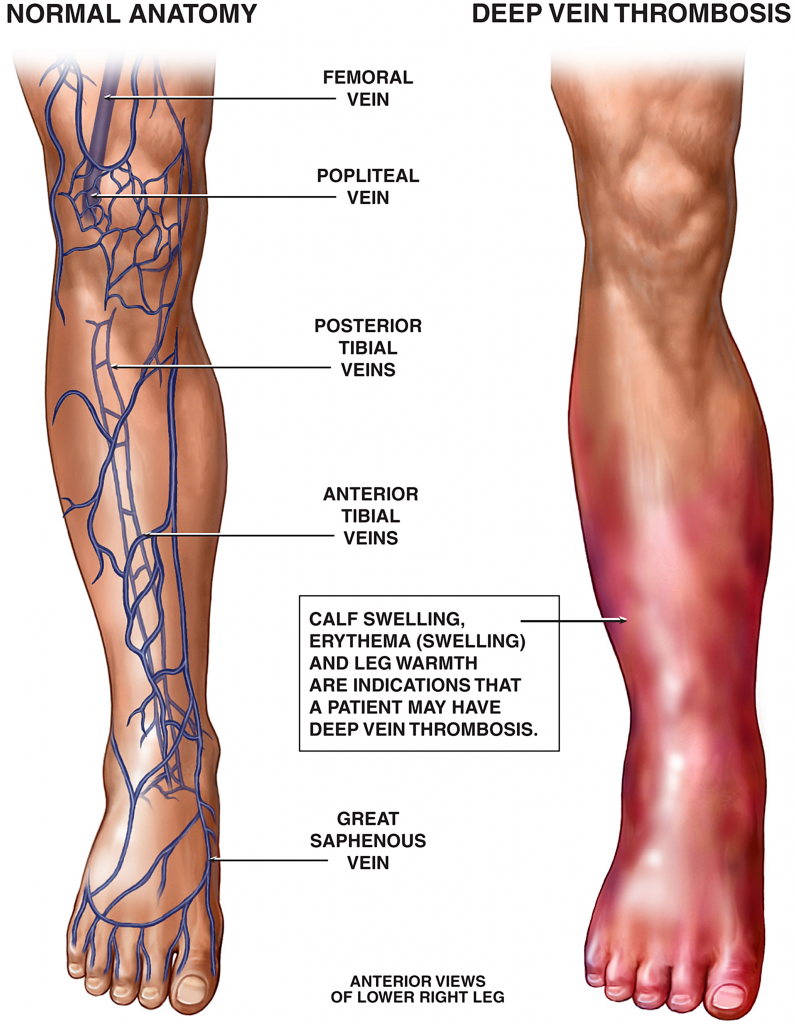Make an Appoinment
Deep Venous Thrombosis or DVT
Bedsores | Decubitus Ulcers
LIPEDEMA | Causes, Symptoms And Treatment | RUFADDAS MEDICAL
Deep venous thrombosis or DVT is caused by blood clot in a deep vein, which could be life-threatening. Hang on, let’s dive in deeper.
WHAT IS THROMBOSIS?
Thrombosis is the formation of clots in blood vessels. Thus, sometimes hinder the flow of blood.Sometimes, the thrombosis detaches from the point of attachment in the blood vessel and is able to move with the blood to other part of the body. On getting to the vessels that are narrow, it has the ability to block and prevent the flow of blood to the organs supplied by such vessels. E.g. The Brain, the Heart.
Veins are the blood vessels that bring oxygen-poor blood and waste products back to the heart. Arteries are blood vessels that bring oxygen-rich blood and nutrients to the body. A Deep Vein Thrombosis (DVT) is a blood clot that forms in a vein deep inside the body. In most cases, this clot forms inside one of the body deep veins of the thigh or lower leg.
The veins in the legs have tiny valves that helps keep blood moving back up toward the heart. But a DVT may damage one or more of the valves. This causes them to weaken or become leaky. When this happens, blood starts to pool in the legs. This can also happen if the person is immobile for a long time. Normally, muscles in the leg help blood move in the veins when the muscles contract. When blood flows very slowly through the veins, this increases the risk that cells in the blood will stick together and form a clot.
DVT is a common condition, especially in the people over age 65. Post-thrombotic syndrome affects a large number of people who have had a DVT. It can happen in men and women of any age.

Deep Vem is a serious medical condition that can cause swelling, pain, and tenderness in the leg. In some cases, a deep clot in a leg vein can break free and stick in a vessel in the lung. This can cause a blockage in the vessel called a pulmonary embolism. Pulmonary embolism can causes severe shortness of breath and sudden death.
Thrombosis can develop anywhere in the CVS (Heart & Blood Vessel).
MAJOR CAUSES / ABNORMALITIES LEADING TO THROMBOSIS ARE
Endothelial Injury (Injury to the blood vessel)
Stasis or Turbulent Blood Flow:
Stasis; when the blood flow is slower than normal.
Turbulent: the blood doesn’t flow as it’s supposed to.
Hypercoagulability of the blood.
The blood has three components:
RED BLOOD CELL (RBC)
WHITE BLOOD CELL (WBC)
Platelets. Platelets are meant to stop bleeding by causing coagulation. The blood solidifies easily even when it’s not meant to.
Deep Venous Thrombosis usually involves one of the large leg veins – at or above the knee.
Popliteal Vein: Back of the knee
Femoral Vein: The Thigh
Iliac Vein: Abdomen
INTERMITTENT PNEUMATIC COMPRESSION (IPC)
Device is used to help prevent blood clots in the deep veins of the legs. The devices use cuffs around the leg that fill with air and squeeze the legs. This increases blood flow through the veins of the legs and helps prevent blood clots.
While using an IPC device, the calf or whole leg is enclosed in a cuff. The cuffs fill with air and squeeze the leg, much like a blood pressure cuff. Then the cuff deflates and relaxes. The process then repeats over and over. The compression helps move blood through the veins towards the heart. IPC also promotes the natural release of substance in the body that prevents clots. Between compressions, the cuffs of the device relax, and oxygen-rich blood continues to flow in the arteries of the leg.
WHY USE INTERMITTENT PNEUMATIC COMPRESSION DEVICES?
You might need to use IPC devices if you have a high risk of getting a DVT. Anything that slows the movement of blood through your veins increases your risk of DVT. A variety of condition can increase your chance of getting a DVT, such as:
Recent surgery, which decrease your mobility and increase inflammation in the body, which can lead to clotting.
Medical conditions that limit mobility, such as injury or stroke
Long period of travel, which limit your mobility
Injury to a deep vein
Inherited blood disorder that increase clotting
Pregnancy
Cancer treatment
Smoking
Obesity
Older age
RISKS OF USING OF INTERMITTENT PNEUMATIC COMPRESSION DEVICES?
All procedures have risks. The risks of this procedure include:
Discomfort , warmth or sweating beneath the cuff
Skin breakdown
Nerve damage(rare)
Pressure injury (rare)
FUNCTIONS OF DEEP VENOUS THROMBOSIS OR DVT PUMPS
In patients, especially those on bed rest, the pump aids blood flow. Normally, gravity helps to push the blood up and contraction of the muscles when walking also aids blood flow. The pump helps to increase the pressure where applied thereby increasing blood flow in those vessels, and preventing thrombosis formation.
Was this article helpful?
Get your compression stockings, DVT line and other quality medical equipment and hospital supplies at affordable prices here at Rufaddas Nigeria Limited. The home of quality medical equipment. We deliver nationwide | Order Now.
Our store locations are Lagos and Ibadan, Nigeria. And yes, we deliver nationwide.
For Enquiries:
Kindly Call
Adelola +234 816 561 9521
Sunday +234 806 034 7394
Rufaddas Medical…Affordable Quality Medical Supplies
Photo Credit (Featured Image):
Visit Us
Suite 41, Aderonke Plaza, 20 Olowu St, Ikeja
rufaddasngltd@gmail.com
WhatsApp us